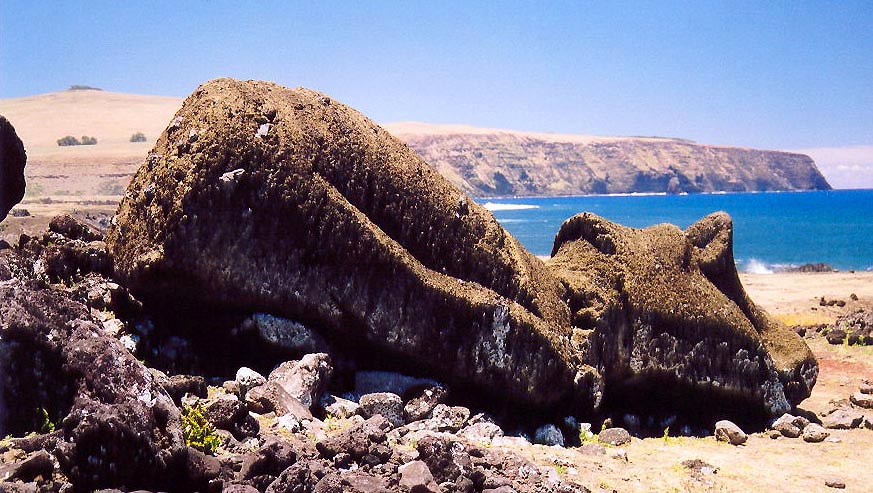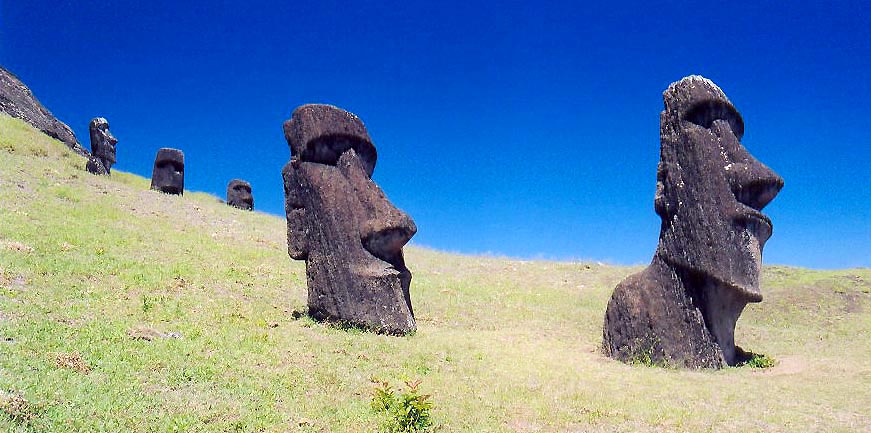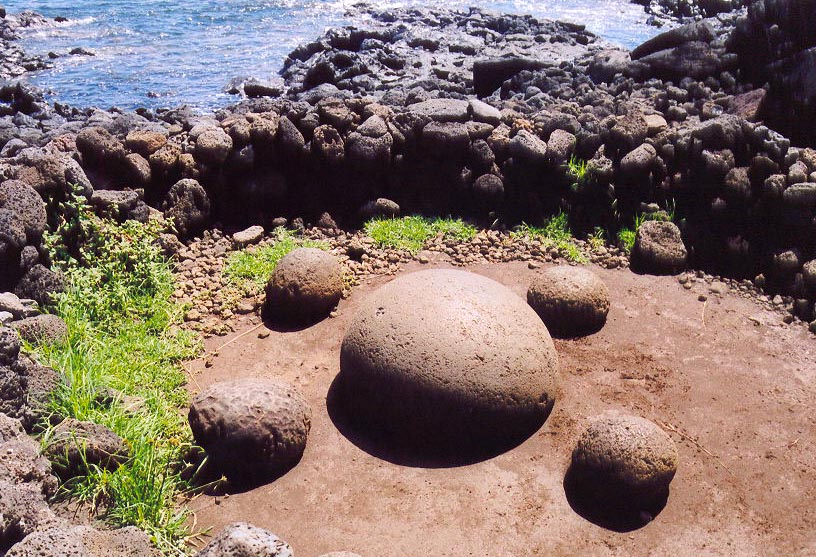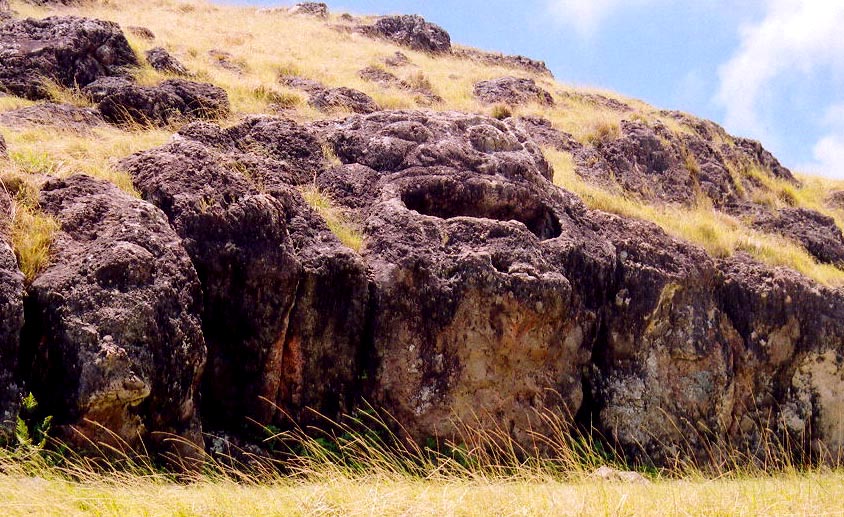Rapa
Nui
blabla

Ahu Tongariki contains the largest moais
and is the most perfectly preserved ahu set on Rapa Nui. Note
that the red topknots on top of one of the moais (they all had them
once) is a different type of stone from a different quarry in the
central part of the island.
blablabla

This is how all moais were found by modern
times visitors. The ones standing up were put back up on the
platform recently This one, part of the Ahu One Tahiki group,
reminded me of Shelley's King Ozymandias. Look on my works, ye
Mighty, and despair!
<>
blabla
<>
The Rano Raraku quarry, on the side of the
Rano Raraku volcano, is where all moais on Rapa Nui were carved out
of. Many partly finished models lie strewn about the surrounding
meadow, awaiting finishing and shipment. It's believed that moai
production ceased suddenly, as moais in all states of development from
still-mostly-embedded in the stone face to finished products can be
found here.
blabla.
<>
 Te Pito o Te Henua,
meaning navel or centre of the world roughly translated from
polynesian, may have a central place in Rapa Nui mythology, but
certainly not geographically. I needed to hitchhike on 3
successive vehicles to get to this isolate spot on the northeast shore
of the island. When I asked my last ride, a friendly family
riding in the back of a pickup truck, where was Te Pito o Te Henua, the
man smiled and pointed at his so.
Te Pito o Te Henua,
meaning navel or centre of the world roughly translated from
polynesian, may have a central place in Rapa Nui mythology, but
certainly not geographically. I needed to hitchhike on 3
successive vehicles to get to this isolate spot on the northeast shore
of the island. When I asked my last ride, a friendly family
riding in the back of a pickup truck, where was Te Pito o Te Henua, the
man smiled and pointed at his so.
blablabla
 Even more remote than Te Pito o Te
Henua was this gorgeous stone carving Vai a Heva. When it rains
heavily, water fills the mouth and then drains out the two corners of
its mouth. I needed to hitchhike aboard an ATV three wheeler of a
vacationing Chilean-American teenager in order to get back to the main
road.
Even more remote than Te Pito o Te
Henua was this gorgeous stone carving Vai a Heva. When it rains
heavily, water fills the mouth and then drains out the two corners of
its mouth. I needed to hitchhike aboard an ATV three wheeler of a
vacationing Chilean-American teenager in order to get back to the main
road.
BACK to HOMEPAGE




